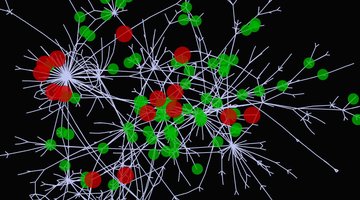Inferencia estadística para el análisis de perturbaciones sistémicas en redes complejas
Dates: from Nov. 1, 2015 to Oct. 31, 2016
Funder: MINECO - Europa Excelencia
Project id: FIS2015-71563-ERC
Total Funding: 60,000€
Node Funding: 60,000€
Visit the project web page
System-wide disturbances that result from seemingly small perturbations are widespread, important and, in general, poorly understood. Consider, for example, how ingestion of a small amount of certain chemicals can trigger systemic physiological changes leading to disease; or how bankruptcy of a few companies can trigger a global economic crisis.
The challenges involved in understanding these processes arise from the properties of the systems in which they take place. Indeed, these systems typically entail: a large number of constituents and an even larger number of interactions between them; non-triviality of the “structure” of these interactions; non-linearity of the interactions; incomplete knowledge about constituents, their states, and their interactions.
We take a network theory approach to deal with these challenges. Our overarching goal is to develop the conceptual framework, the mathematical, statistical and computational tools and, ultimately, the algorithms that would enable us to design a “machine” capable of automatically formulating and testing hypotheses, and building theories, about the mechanisms responsible for spreading systemic disturbances on complex systems. The algorithms would take large amounts of data as input, automatically investigate alternative plausible scenarios, determine what needs to be measured and tested further, and iterate the process until a satisfactory explanation is found for all observations. The "machine” we envision would be able to account for the topological aspects of systemic disturbances (the path followed by the perturbation) as well as their dynamical aspects (the equations governing the process).
The specific goal of this proposal is to demostrate that both the structural inference and the dynamical inference aspects of this overarching goal are feasible using statistical inference approaches.
Publications
- Bayesian machine scientist to compare data collapses for the Nikuradse dataset - Phys. Rev. Lett. 124 , 084503 (2020).
- A Bayesian machine scientist to aid in the solution of challenging scientific problems - Sci. Adv. 6 (5) , eaav6971 (2020).
- Consistencies and inconsistencies between model selection and link prediction in networks - Phys. Rev. E 97 , 062316 (2018).
- Accurate and scalable social recomendation using mixed-membership stochastic block models - Proc. Natl. Acad. Sci. USA 113 (50) , 14207 -14212 (2016).
- Inferring propagation paths for sparsely observed perturbations on complex networks - Sci. Adv. 2 , e1501638 (2016).
- Multilayer stochastic block models reveal the multilayer structure of complex networks - Phys. Rev. X 6 , 011036 (2016).

